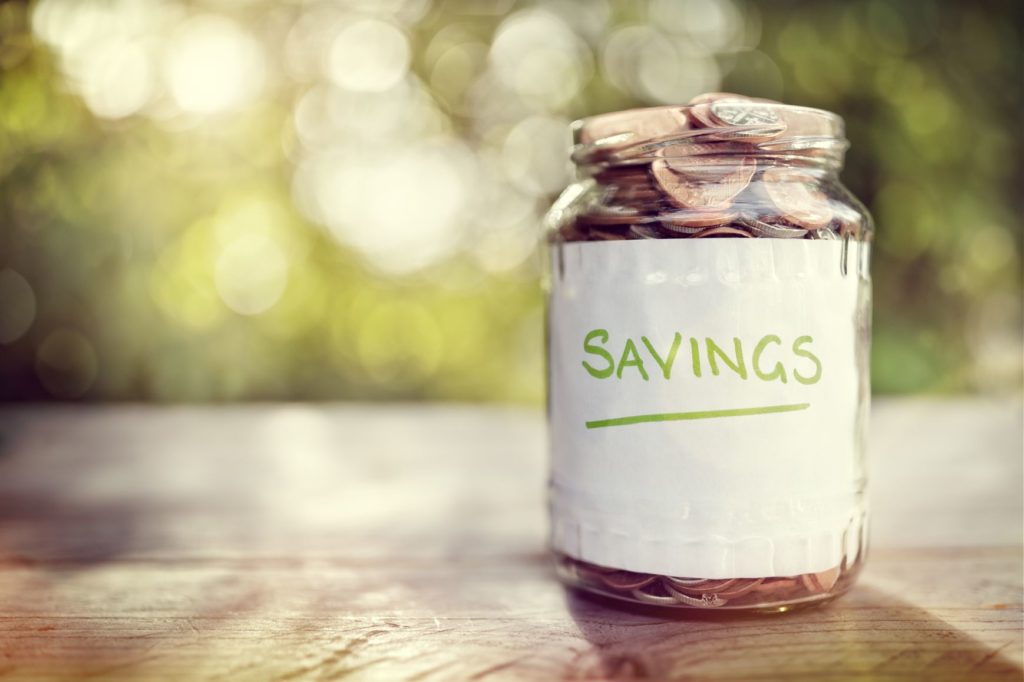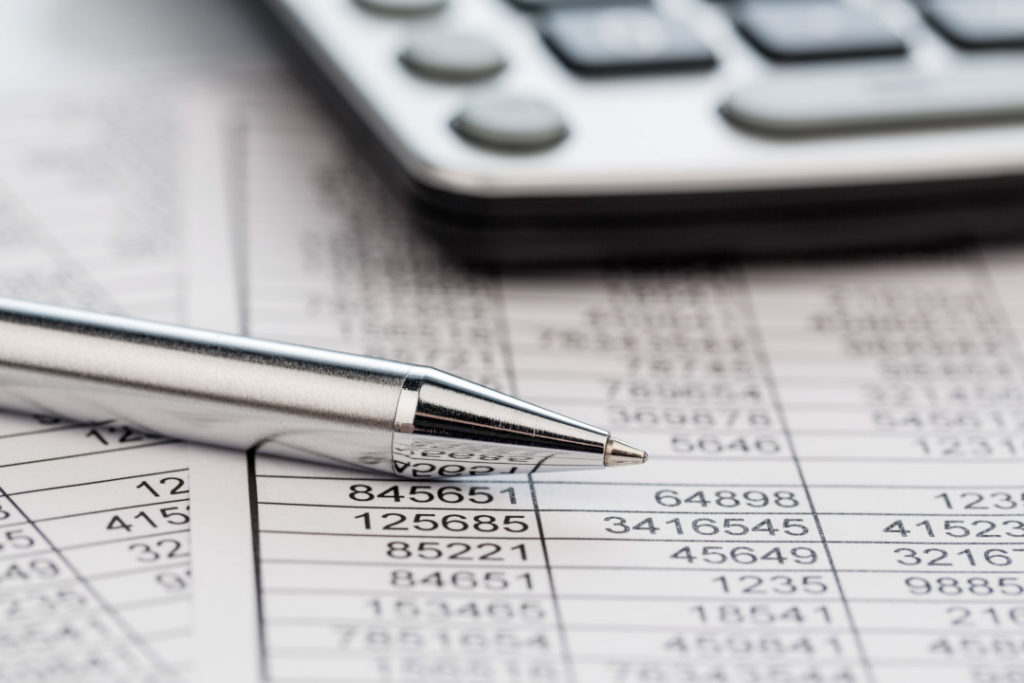Introduction – How to prioritize savings
This article is part of my ‘how to build a budget’ series. Figuring out how to prioritize savings is an important part of building any budget strategy. For a more detailed look at the process of building a budget and all the categories I suggest including, see the full article here: How to Build a Budget.
Saving money consistently is an important first step toward building a budget. Prioritizing the goals for this money is important as well. Below are suggestions on how to prioritize your savings to reduce debt and maximize savings growth.
This is not a strict linear list; some of these priorities can and should be pursued in parallel as I’ve noted below. Also keep in mind that consistency is most important of all, so if prioritizing differently will encourage you to save more regularly, then go for it!
Table of Contents
Priority 1 - Building an emergency fund
It’s best to make sure you have some amount of money on hand to pay costs associated with an emergency. This could include hospitalizations or surprise expenses for your home or car that may not be planned for yet.
By having this fund ready to go you will be able to manage these situations and keep your household operating without disruption. This means having the cash on hand needed to meet your obligations now (such as at the auto shop to get your car back, or the copay at a hospital) and still having the cash available to pay your normal monthly expenses tomorrow.
Stop emergencies from growing
Having this cash available means that a small emergency won’t become a large one by causing you to be late on your bills and mortgage or forcing you into a cycle of short-term debt to stay afloat.
This cash also offers the greatest resource of all – time. Having cash on hand means you have the resources to get through today when you’re already under stress from whatever unexpected situation has popped up. Then you can rebuild the emergency fund on your own time, paying yourself interest instead of paying interest to a credit card company or check-cashing business.
Knowing I have this cushion available helps me sleep much better at night, even if it may not cover every possible situation that may occur. The key is to be prepared for what is most likely to be a source of problems in your life.
What size emergency fund should you have?
The actual amount to save here should be based on your situation and just how much you feel the need to prepare for. I would suggest starting with at least $1,000-2,000. I prefer around $10,000, with possibly even more allocated depending on the size of your household, but again this is totally up to you.
Think of some prior surprise expenses that you have had to deal with over the last few years – how much did it cost to get you out of that jam? How long before the next emergency reared its head? I would ensure that you have enough in your emergency fund to cover these occurrences, with enough of a buffer to rebuild the emergency fund before the next event.
An emergency fund won’t cover 100% of the cost of every emergency that may occur, no matter the size. The goal isn’t to cover everything, the goal is to have some cash on hand to handle small emergencies and buy yourself a few days to get your affairs in order in case you’re dealing with something larger.
To start with, this money can be kept in a savings account, but for anything beyond the first $5,000, I would suggest looking into CDs or money market accounts to earn additional interest while this is being saved. If the money is somewhere that can be accessed easily when an emergency occurs, there is flexibility in where your savings are placed.
For ideas on where to keep your money based on how quickly you may need to access it, see the “Where should you put your savings?” section below. For ideas on where to keep your money based on how quickly you may need to access it, see the “Where should you put your savings?” section below.
Why so much in the emergency fund?

$10,000+ held back just for emergencies can seem like a huge sum of money for some people, and I understand the reaction.
Having the first $1,000-2,000 ready in the bank is important to make sure you have some cash on hand when needed, as that will probably cover most emergencies you will (hopefully) see.
However, there are rare cases that could easily blow through an emergency fund of this size. According to the Kaiser Family Foundation, the average cost of one day in a hospital in the US is nearly $3,000 (Hospital Adjusted Expenses per Inpatient Day | KFF).
Additionally, as a homeowner, I know that even the most basic projects seem to run into the $2,000-3,000 range quickly, and if you aren’t already budgeting for a roof replacement or a new furnace, these projects can easily extend into the $20,000+ range on even smaller houses (depending on where you live).
Also, what’s your plan if one of the breadwinners in the house becomes unemployed? Most state unemployment insurance only covers a portion of your prior pay, and only for a set duration. If the emergency fund isn’t enough to cover your bills, and/or you aren’t able to get a new job before unemployment expires, then what?
How much of a cushion for risk is right for you?
Even a $10,000 emergency fund can vanish in a flash when some of these situations arise. So why not save $20,000? $50,000? $100,000?
You could build your emergency fund forever, continuously building to cover any possible eventuality. But that isn’t realistic – if you have other budget goals (which I certainly do), then there needs to be a limit on how much you save. You need to find the right balance that will protect your family from emergencies, while also leaving money in your budget for other goals.
This is one of the reasons why it’s great to set a budget strategy and allocate a percentage of income to savings in general. Once some amount of income is set aside for savings, you can set aside a certain amount towards your emergency fund every month. If the emergency fund grows beyond what you think is necessary to serve as this buffer for emergencies, you can take that excess and use it for other savings goals (like putting the money into a retirement or investment account, for example).
For more information about how to set your budget strategy, see my other article on How to build a budget. And for another perspective on how much to save, The Motley Fool provides an easy-to-use calculator along with some guidance on how much to set aside for emergencies: Emergency Fund Calculator: Find Out How Much to Save for an Emergency | The Motley Fool.
Using credit cards and short-term loans as an emergency fund
The amount to keep in your emergency fund is about what level of risk you are willing to take. If you are more risk averse, then having a large cushion of cash is likely the right choice to help reduce anxiety and ensure you are prepared for a large variety of circumstances.
If you don’t worry so much about the future and what could happen, then a smaller emergency fund may be more appropriate. I would caution against plans that eliminate an emergency fund, such as the plan to short-term loans or credit cards to cover emergency expenses.
Keep in mind that if you do lose a job, for example, it may become more challenging to secure short-term debt. Additionally, if you use credit cards for cash you will often need to pay extremely high-interest rates, such as 10-20% plus annual rates. This means that you are paying a large amount of interest in addition to the principal to get back to normal and can put you into a cycle of using short-term debt that will make it harder and harder to ever dig yourself out.
Priority 2 - Paying down debt
If you have any high-interest debt, like credit card bills or personal loans, then pay those down next. Prioritize the highest interest rate loans first as this will reduce the total amount you need to pay in the long term.
I would recommend doing this in parallel with growing your emergency fund when getting started if you have any 10%+ annual interest rate debt like on some credit cards.
If you have a lot of high-interest debt, remember that some banks and credit unions will often offer lower-interest rate personal loans or credit cards that you can use to consolidate your debt. Your credit rating will impact what options are available, but I encourage everyone to pursue this if possible as debt consolidation may allow you to lower your interest payments before even starting to pay down the principal on your debt.
Priority 3 - Saving for retirement
If you are lucky enough to have an employer that offers 401k matching, then take advantage of this to the fullest. Taking advantage of an employer match on retirement is like getting a free raise!
Even if you don’t have access to employer matching on retirement contributions, I would start saving something for retirement as soon as possible. That is if some progress is made towards paying down debt and starting an emergency fund as well. Keep in mind that employer-sponsored plans will often be withdrawn pre-tax, so the net deposit in your paycheck will decrease after enrolling in this plan.
If you don’t have an employer-sponsored plan, companies like Vanguard and Fidelity offer the option to set these up for yourself.
As with any stock market investment, it’s best to have a strategy for investing. I won’t offer specific recommendations, but generally experienced and educated investors will invest more of their money in individual stocks, while those that aren’t as well versed in the topic should focus more on mutual funds. When picking mutual funds, just make sure to check the fee ratios and performance when evaluating your options, as fees will lower the amount of the return that you get to keep.
It's ok to start small if you start right away!
I consider this priority 3 given that an emergency fund should be ready to go immediately and paying down debt will mean you get to keep more of your income in the future.
However, the benefits of compounding are such that the earlier you can put money into retirement, the better. It’s ok to start small but make regular contributions as soon as you are able. Then with time, once your debt is paid down and your emergency fund is as large as you want it to be, more of the Savings category in your budget can be dedicated to retirement.
The key to any savings strategy is consistency, so if looking at your retirement plans, I suggest setting up automatic withdrawals to take out any guesswork.
Priority 4 - Long-term saving goals

This bucket will overlap somewhat with buckets that fall into the ‘Everything else’ category of a standard budget. This includes saving for family trips or maintenance on cars and homes, as these are hard to prepare for many households.
My preferred practice is to save for these goals in the ‘Everything else’ category, if possible, but that’s not realistic for everyone. If you know you want to buy a house, and can’t find the money elsewhere in your budget, using some of your savings for this purchase is an option. Just keep in mind that any savings money used for these sorts of goals will mean less money saved for retirement.
Priority 5 – Where should you put your savings?
Now that you have the main buckets identified for your Savings budget category, the next step is to come up with a plan for where to put this money.
One thing to keep in mind is that even though this whole category is for savings, a savings account is not always the best place to store this money. A portion of the emergency fund should always be in a bank account for easy access, but the rest could be placed in CDs, high-interest-rate savings accounts, or even invested in a stock or mutual fund investment account.
The key to remember is how liquid these funds need to be – that is, when do you think you’ll need to access this money next? If ‘when’ is more than a year out, there may be options other than bank savings accounts that you can use to earn a better interest rate while your money is sitting and waiting to be used.
Saving in the stock market
As an alternative to a savings account, the S&P 500 index of stocks, for example, tends to grow at about 8% per year on average historically. That sounds great, especially compared to a savings account that may earn 1% or less in interest per year!
The challenge is that this return is based on an average over a very long period. Fluctuations in the stock market over the short term, generally considered as less than 5 years, can be something very different. This means that over the next few years, you could see your savings in the S&P 500 decrease! Not a good situation if you find you need that money today.
If a portion of your emergency fund is unlikely to be used anytime soon, such as for anything above the first ~$5,000 saved, then an index mutual fund that tracks the S&P 500 could be a good option.
But if you think you will need that money within less than five years, then the stock market is probably not the best place to have this money saved.
Saving based on your timeline
Professional recommendations may differ, but here’s a rough guide of what options I choose for savings when considering how long I expect that money to sit before I need it to be used:
- Needed ASAP. This is your go-bag money if you needed to run out the door – Cash
- Needed within the next year. E.g., upcoming vacations or home projects for next year, and the first $5,000 of my emergency fund – Bank savings accounts
- Needed in 1-3 years. g., further out home projects or large purchases – CDs, Treasury bonds, Money market mutual funds
- Needed after 3 years. g., a car replacement fund (assuming I start saving right when the current car was purchased), the remainder of my emergency fund, other longer-term projects we’re saving for – Stock and mutual fund investment accounts
Conclusion
Building and prioritizing savings is an important part of any budget strategy, but as you have seen there are a lot of options for where to focus and where to store your money. To summarize, I recommend you consider your savings options roughly in this order, remembering that this is about prioritization of money, not about sticking to a strictly linear one-after-the-other approach. All of these options will likely be pursued in parallel to some extent in your budget:
- Building an emergency fund to protect your family from a cycle of using short-term debt to get by if a surprise expense occurs
- Paying down debt to reduce your expenses over time, aiming to reduce the highest rate debt first to reduce how much money is lost to interest each month
- Setting up a regular investment for retirement to take advantage of compounding as soon as possible, especially when an employer-sponsored retirement plan offers contribution-matching
- And finally, determining the best place to store your savings to ensure money is available for immediate needs, while also earning the best return possible while that money is sitting unused
I hope the information here helps you maximize the effectiveness of your savings strategy. For more information on how to build a budget strategy and your first budget, see my other article: How to build a budget.
Happy saving!



